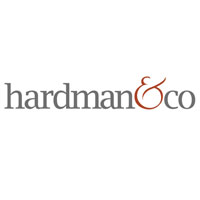Primary Health Properties PLC (LON:PHP) is the topic of conversation when Hardman and Co’s Analyst Mike Foster caught up with DirectorsTalk for an exclusive interview.
Q1: Mike, can you tell me about Primary Health Properties, what are they?
A1: PHP purchases modern standing stock, in primary medical properties, that’s doctors’ surgeries and the strategy is focused tightly on that particular sector, and they’ve been investing in the UK for 22 years.
Two years ago, PHP extended into the Republic of Ireland and since then has invested just over €100 million in assets in newly built primary medical centres in that country.
Q2: Where does this leave dividends?
A2: We believe there’s scope for the dividend per share to accelerate. When we last spoke, last year, our estimates for dividend per share growth were 2.5% to 3% a year in 2018, 2019 and 2020. Our current estimate 3.7% in 2019, is above the 4.5% for 2020.
Q3: Why have you raised estimates for dividend growth?
A3: First, the business is hitting all the right metrics, investing at the net initial yields it had guided investors to and at the speed it had indicated it would. PHP is setting strong expectations and meeting them.
In addition to that, 2019 has seen a big, positive event. A month ago, it completed its merger with a similar REIT, namely MedicX Fund. This adds well over £800m of investment assets of as high a quality as PHP’s. The stamp duty cost was zero and the merger brought £4m a year synergy efficiencies.
It also added complementary routes to purchase new assets, that includes MedicX’s close relationship with developers including its formerly in-house development team.
Q4: When we spoke last year, you mentioned three factors driving accelerating dividend growth. Are they still in place?
A4: Yes. These are long term “baked in” trends. One is the expansion of group assets in the higher cash-generating Irish assets. Net income on acquisitions in the UK is anticipated to be secured at ca. 4.85% and after costs the income return (i.e. the pick-up in income on an asset funded notionally 100% through debt) is a positive 1.5%. The equivalent figure in the Republic of Ireland stands at double that pickup. We anticipate some 25% or more of purchases to be from Ireland in our model’s time frame.
Q5: And the other drivers to dividends?
A5: One other is that PHP’s cost of debt has been falling in recent years and still will fall further through some relatively expensive debt matures in 2019. And then also there is the growth in size. That brings greater management fee efficiencies which raise profit margins too. There is a big step up here with the MedicX merger. It is stated this reduces £4m a year costs.
Q6: You’re talking a lot about dividends, are these really that dominant in your assessment?
A6: Dividends drive total returns. Let’s look at the whole of the past cycle.
Since the market peak of 2007, the total return for PHP assets averaged 7.9%. Well over half that was from asset income and (being a REIT) this income is distributed out to shareholders. By the way, that 7.9% for its primary medical assets compares with 6% for gilts, 4.9% for all-property and 5.9% for equities.
So, it’s a fact that these PHP assets outperformed through the whole cycle. In the downturn phase, it still generated positive returns unlike most other assets. That all drives dividends and PHP has a very creditable record. It has been quoted 22 years and has delivered 22 years’ unbroken dividend growth.
Q7: Can you summarise the risks to investors?
A7: We consider both the operational and the valuation risks are manageable. Occupancy is typically ca. 99.8%. Debt maturity is over eight years, from a wide variety of bank and bond sources. 2018 DPS cash cover was over 100%, and cover grew in 2018 with further rise in that ratio in coming years. Undrawn debt facilities exceed £200m. PHP states a 2.6% marginal rate of interest on borrowing, vs. the 3.9% average cost in 2018, so costs continue to trend down (it fell again in 2018). In 2016 it was 4.6%. Debt loan to value is robust (below 50%) and the long leases on its assets are upwards only rents with near-Governmental covenants. Property – even this sector – can be cyclical in nature. While PHP and market interest rates are falling, they can move in a cyclical nature.


